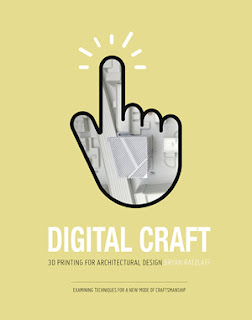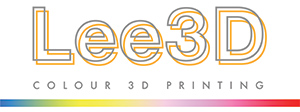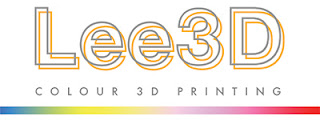In today's business world there often seems little time to think, let alone read a book. Over the years, we have built a successful business based on solving a problem for architects. The problem we have been addressing is how architects can present designs using physical models almost without breaking stride in the design process.
The essence of 3D printing is a combination of slavish accuracy of the machine-made and astounding speed of delivery. Often the process of printing models is squeezed into just a few days and sometimes just a few hectic hours.
We began to realise that this process of time compression can lead to short-cuts in decision making which in turn can lead to a certain sameness of outcome. Often, the potential of the process was not quite met in the cut and thrust of meeting deadlines. So we decided to commission a full study of 3D printing as used in the architectural design process. The result was Digital Craft - 3D Printing for Architectural Design.
A book, in many ways, opposes the pull of 3D printing towards quick fire decisions. In the discussions that lay behind the writing of the book many insights were uncovered. It became clear that in many people's minds 3D printing fell somewhere between printing and modelmaking. The book, as the title suggests became in part a reasoned argument for placing 3D printing firmly into the realm of modelmaking.
The traditional relationship between architect and the modelmaker was being disrupted and needed to be examined in the new light of 3D printing. Digital Craft became the product of this exploration.
Why read the book? We believe that the perspective given in Digital Craft will help architects to make more effective 3D printed design models. That is, the kind of model used to communicate the design to clients, planning authorities, the public and indeed to the wider design team itself.
Digital Craft - 3D Printing for Architectural Design. Time well spent.
For more about Lee 3D printing please visit www.lee3d.co.uk
3D printing for colour. 3D printing for architecture. Not necessarily 3D printing for colour architecture.
Thursday 17 November 2016
Monday 4 April 2016
Colour 3D Printing
Colour matching in 3D printing is not quite the same as colour matching in traditional reprographics. Different materials reflect light differently and three dimensional forms create shadows producing variations in tone of colour that are not seen on flat images.
There are many factors that affect 3D printing in colour: reflectivity, translucency, surface texture, tonality and saturation are just some of them.
As is often the case, it really depends what you are trying to achieve. The ability to produce skin tones or very light and washed out colours are often more desirable over fully saturated bright colours.
At Lee 3D, we print using the ProJet 660 printer, made by 3D Systems, which prints CMYK coloured binder onto a white substrate powder. This offers a wide range of colour and tonal qualities.
While we have never claimed to match Pantone or RAL colours, we can get quite close as shown in the image below.
The reality of these machines is that the whiteness of the powder varies slightly between machines and if printheads are not properly aligned and parts are not finished meticulously then they can produce inconsistent part quality. But by attending to details, it is possible to make high quality colour 3D prints using this system.
There are two main alternatives to the ProJet for colour printing. These are the MCor and Stratasys machines. The MCor machine has limitations on the geometry that can be produced, while the Stratasys offerings are significantly more expensive machines to buy and to run. In particular, it is usually not possible to print hollow parts on these machines as they need a solid platform of material supporting all parts of the model as it prints. A third colour printer looms in the background in the form of the HP offering, but this appears to print on a black substrate precluding pale and pastel shades.
Of these, the newly released Stratasys J750 printer may prove to be the most accurate colour printer ever made. The parts are likely to be highly accurate and can have multiple material characteristics as well as colours. But lower cost and the achievable quality on a well made ProJet part may continue to make this the machine of choice for much colour work for years to come.
For more information about Lee 3D colour printing visit http://www.lee3d.co.uk
There are many factors that affect 3D printing in colour: reflectivity, translucency, surface texture, tonality and saturation are just some of them.
As is often the case, it really depends what you are trying to achieve. The ability to produce skin tones or very light and washed out colours are often more desirable over fully saturated bright colours.
At Lee 3D, we print using the ProJet 660 printer, made by 3D Systems, which prints CMYK coloured binder onto a white substrate powder. This offers a wide range of colour and tonal qualities.
 |
| Sample parts made on ProJet 660 Gloss finish can intensify brighter colour |
 |
| Parts made on ProJet 660 Light and subtle tones |
While we have never claimed to match Pantone or RAL colours, we can get quite close as shown in the image below.
The reality of these machines is that the whiteness of the powder varies slightly between machines and if printheads are not properly aligned and parts are not finished meticulously then they can produce inconsistent part quality. But by attending to details, it is possible to make high quality colour 3D prints using this system.
 |
| Matching colour to the RAL paint system It is possible to get something pretty close with most colours |
There are two main alternatives to the ProJet for colour printing. These are the MCor and Stratasys machines. The MCor machine has limitations on the geometry that can be produced, while the Stratasys offerings are significantly more expensive machines to buy and to run. In particular, it is usually not possible to print hollow parts on these machines as they need a solid platform of material supporting all parts of the model as it prints. A third colour printer looms in the background in the form of the HP offering, but this appears to print on a black substrate precluding pale and pastel shades.
Of these, the newly released Stratasys J750 printer may prove to be the most accurate colour printer ever made. The parts are likely to be highly accurate and can have multiple material characteristics as well as colours. But lower cost and the achievable quality on a well made ProJet part may continue to make this the machine of choice for much colour work for years to come.
 |
| Colour 3D prints made on ProJet 660 |
For more information about Lee 3D colour printing visit http://www.lee3d.co.uk
Thursday 31 March 2016
Exporting for 3D print
The subject of this blog is one of those topics that rarely gets covered in depth. In practice I am frequently telling customers to move their data to the origin before exporting for 3D print. But why is this?
Many BIM, CAD and 3D modelling programs have a very large drawing space. An example of why this would be useful is when designing a very large structure like a road or railway. Similarly a large coordinate space allows buildings to be designed at their correct location in relation to a city grid.
When exporting 3D models for applications such as 3D printing a problem can occur causing the exported data to become deformed as shown in the image below.
The problem seems to be that most 3D modelling programs are based on geometric modelling Kernels such as ACIS or Parasolid. These work fine when close to the origin but lose accuracy outside of the kernel's modelling space.
Confusingly many of the applications functionality is unaffected by modelling outside the kernels modelling space but certain functions either fail completely or result in degraded data.
In MicroStation for example the coordinate system (Working Area) will go well beyond a million km from the origin but the Solids Area is only a 4.2km cube. The 4.2km limit being set by the Parasolid modelling kernel used in MicroStation. When you draw more than 2.1km from the origin the lower resolution may not be immediately apparent but may manifest downstream, such as when you export to STL etc.
This is not a problem restricted to MicroStation. It is a problem with most 3D modelling packages. As a consequence it is always best practice to model near the origin whenever possible.
Many BIM, CAD and 3D modelling programs have a very large drawing space. An example of why this would be useful is when designing a very large structure like a road or railway. Similarly a large coordinate space allows buildings to be designed at their correct location in relation to a city grid.
When exporting 3D models for applications such as 3D printing a problem can occur causing the exported data to become deformed as shown in the image below.
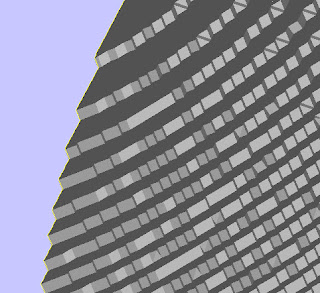 |
| Bad STL export of sphere from Rhino when deliberately modelling far from origin |
The problem seems to be that most 3D modelling programs are based on geometric modelling Kernels such as ACIS or Parasolid. These work fine when close to the origin but lose accuracy outside of the kernel's modelling space.
Confusingly many of the applications functionality is unaffected by modelling outside the kernels modelling space but certain functions either fail completely or result in degraded data.
In MicroStation for example the coordinate system (Working Area) will go well beyond a million km from the origin but the Solids Area is only a 4.2km cube. The 4.2km limit being set by the Parasolid modelling kernel used in MicroStation. When you draw more than 2.1km from the origin the lower resolution may not be immediately apparent but may manifest downstream, such as when you export to STL etc.
This is not a problem restricted to MicroStation. It is a problem with most 3D modelling packages. As a consequence it is always best practice to model near the origin whenever possible.
Modern Architectural Design Tools Timeline
The following timeline places various architectural design tools by date. The purpose for this record was to create a context in which to view 3D printing as a design tool. From this point of view, today (2016) it is clear that the use of 3D printing in architecture is still very new. Even though early adopters were employing SLS and SLA printing for architectural model making in the 1990s and plaster-based printing from the 2000s these are still few and far between.
Four buildings have been added to the timeline to act as a reference. These are somewhat arbitrary and do not necessarily represent precedents in use of technology.
Each of the buildings shown relate in some way to the story of computing in architecture, not least the Lloyds building, the design of which commenced before any of the CAD packages that we know today. The Lloyds building was designed and built in the period that saw the appearance of the first personal computers. This led to a change in the way buildings are used and serviced and consequently changed the form of the buildings themselves. The affect of computing on architecture is undeniable but not always obvious. New design tools change the way architects work but the affect of design tools on the design of the buildings produced is sometimes less easy to identify.
There have been a great many pioneers of architectural design tools. Many tools have been developed and for one reason or other they have been abandoned or superseded. It is worth making the observation that there is often little inclination to share detailed information on active design projects. Once buildings are complete and considerations of confidentiality have past these details fade from memory as focus switches to new challenges. Therefore much pioneering work is lost to public record. This timeline is admittedly only the bare bones of the story.
1928 Tintenkuli nibless drawing pen (precursor to Rotring Rapidograph)
1953 Rotring Rapidograph drawing pen
1953 IBM 650 series of computers
1956 First computer keyboard
1957 Jorn Utzon wins international competition to design Sydney Opera House. Ove Arup & Partners engaged as engineers.
1959 Letraset founded - manually applied lettering system
1959 Calcomp 565 pen plotter
1960 DEC release first Mini Computer, the PDP-1, priced between $125,000 and $250,000. This computer was used to play 'Spacewar', the first digital screen game.
1962 Douglas Englebart envisions BIM in "Augmenting Human Intellect". He anticipates object based design, parametric manipulation and a relational database
1963 Ivan Sutherland writes Sketchpad considered to be the ancestor of modern CAD programs
1963 First Pantone Matching System Printers Edition
1963 First computer mouse, invented by Douglas Englebert
1965 After 8 years work on Sydney Opera House Tim Rice and Tony Cramm write a program from scratch, they run it at night borrowing time on an Australian General Electric computer to calculate positions of pre-cast segments.
1968 Conference 'Computer Graphics in Architecture and Design' Yale University
1969 Appalachian Conference, led by SOM at an IBM research facility. Out of this was formed the SOM, Computer Group
1973 Sydney Opera House opens
1974 Intergraph IGDS, precursor to MicroStation
1975 DRAW2D, SOM Computer Group
1977 DRAW3D, SOM Computer Group
1977 Really Universal Computer Aided Production System (RUCAPS) sold through GMW Computers Ltd (from GMW Architects)
1978 Richard Rogers begins work on Lloyd's Building
1981 IBM launches first Personal Computer running Microsoft MS DOS 1.0
1982 AutoCAD 1.0
1982 Catia 1.0
1982 Romulus, the first 3D modelling kernel. Later becomes ACIS.
1984 MicroStation 1.0
1984 ArchiCAD 1.0 (named Radar CH for first version only)
1984 First HP LaserJet printer, Apple's LaserWriter followed the following year
1985 MiniCAD 1.0 (later renamed VectorWorks)
1986 Lloyds Building completed
1987 First commercial SLA 3D printer, SLA-1, made by 3D Systems
1988 STL file format
1989 First Commercial SLS 3D printer built by DTM (later acquired by 3D Systems)
1989 ACIS 3D modelling kernel
1989 Parasolid 3D modelling kernel
1990 Photoshop 1.0
1992 Magics 1.0 (an STL editor which became the industry standard software for 3D print bureaus.
1993 PDF 1.0
1994 Gehry Technologies founded
1997 First commercial Z Corporation 3D printer, Z402
1997 Foster + Partners begin work on 30 St Mary Axe
1998 Foster + Partners' Specialist Modelling Group formed, 30 St Mary Axe becomes one of their first projects
1998 Rhinoceros launched
2000 Morphosis buy a ZPrinter from Z Corporation. They are one of the first architectural practices to run a 3D printer in-house.
2000 Revit 1.0
2001 Microstation v8 (file format changes for first time)
2001 Smartgeometry Group formed
2002 Autodesk acquire Revit
2002 AutodDesk whitepaper "Building Information Modelling"
2003 Bentley Systems' Generative Components in Alpha
2003 64-bit processors become available in personal computers
2004 Morphosis begin designing Cooper Union building using 3D printing as part of the design process
2004 Foster + Partners' 30 St Mary Axe completed
2005 Launch of Spectrum 510 colour 3D printer by ZCorporation. The increased resolution and build size meant reasonable quality architectural concept models could be printed overnight.
2008 - ZPrinter 650, replaced for the 510 with slightly larger build
2008 Great Recession begins
2009 Morphosis's Cooper Union building completed
2012 3D Systems acquires ZCorporation and rebrands the ZPrinter range as ProJet x60
2016 Digital Craft - 3D Printing for Architectural Design, written by Bryan Ratzlaff and published by Lee 3D. The first book to deal with 3D printing for architectural design as its sole subject.
Find out more about Digital Craft at http://www.lee3d.co.uk/digitalcraft/
Four buildings have been added to the timeline to act as a reference. These are somewhat arbitrary and do not necessarily represent precedents in use of technology.
Each of the buildings shown relate in some way to the story of computing in architecture, not least the Lloyds building, the design of which commenced before any of the CAD packages that we know today. The Lloyds building was designed and built in the period that saw the appearance of the first personal computers. This led to a change in the way buildings are used and serviced and consequently changed the form of the buildings themselves. The affect of computing on architecture is undeniable but not always obvious. New design tools change the way architects work but the affect of design tools on the design of the buildings produced is sometimes less easy to identify.
There have been a great many pioneers of architectural design tools. Many tools have been developed and for one reason or other they have been abandoned or superseded. It is worth making the observation that there is often little inclination to share detailed information on active design projects. Once buildings are complete and considerations of confidentiality have past these details fade from memory as focus switches to new challenges. Therefore much pioneering work is lost to public record. This timeline is admittedly only the bare bones of the story.
1928 Tintenkuli nibless drawing pen (precursor to Rotring Rapidograph)
1953 Rotring Rapidograph drawing pen
1953 IBM 650 series of computers
1956 First computer keyboard
1957 Jorn Utzon wins international competition to design Sydney Opera House. Ove Arup & Partners engaged as engineers.
 |
| Sydney Opera House detail Image by Leithcote / Antony Oliver (Flickr) via Wikimedia Commons |
1959 Letraset founded - manually applied lettering system
1959 Calcomp 565 pen plotter
1960 DEC release first Mini Computer, the PDP-1, priced between $125,000 and $250,000. This computer was used to play 'Spacewar', the first digital screen game.
 |
| Spacewar running on PDP-1 Image Joi Ito via Wikimedia Commons |
1962 Douglas Englebart envisions BIM in "Augmenting Human Intellect". He anticipates object based design, parametric manipulation and a relational database
1963 Ivan Sutherland writes Sketchpad considered to be the ancestor of modern CAD programs
1963 First Pantone Matching System Printers Edition
1963 First computer mouse, invented by Douglas Englebert
1965 After 8 years work on Sydney Opera House Tim Rice and Tony Cramm write a program from scratch, they run it at night borrowing time on an Australian General Electric computer to calculate positions of pre-cast segments.
 |
| Sydney Opera House 1968 Image by PhillipC (Flickr) via Wikimedia Commons |
1969 Appalachian Conference, led by SOM at an IBM research facility. Out of this was formed the SOM, Computer Group
1973 Sydney Opera House opens
1974 Intergraph IGDS, precursor to MicroStation
1975 DRAW2D, SOM Computer Group
1977 DRAW3D, SOM Computer Group
1977 Really Universal Computer Aided Production System (RUCAPS) sold through GMW Computers Ltd (from GMW Architects)
1978 Richard Rogers begins work on Lloyd's Building
1981 IBM launches first Personal Computer running Microsoft MS DOS 1.0
1982 AutoCAD 1.0
1982 Catia 1.0
1982 Romulus, the first 3D modelling kernel. Later becomes ACIS.
1984 MicroStation 1.0
1984 ArchiCAD 1.0 (named Radar CH for first version only)
1984 First HP LaserJet printer, Apple's LaserWriter followed the following year
1985 MiniCAD 1.0 (later renamed VectorWorks)
1986 Lloyds Building completed
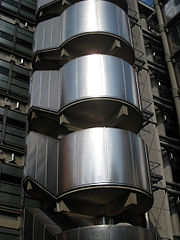 |
| Richard Rogers Partnership, Lloyds Building detail Image from Oast House Archive via Wikimedia |
1987 First commercial SLA 3D printer, SLA-1, made by 3D Systems
1988 STL file format
1989 First Commercial SLS 3D printer built by DTM (later acquired by 3D Systems)
1989 ACIS 3D modelling kernel
1989 Parasolid 3D modelling kernel
1990 Photoshop 1.0
1992 Magics 1.0 (an STL editor which became the industry standard software for 3D print bureaus.
1993 PDF 1.0
1994 Gehry Technologies founded
1997 First commercial Z Corporation 3D printer, Z402
1997 Foster + Partners begin work on 30 St Mary Axe
1998 Foster + Partners' Specialist Modelling Group formed, 30 St Mary Axe becomes one of their first projects
1998 Rhinoceros launched
2000 Morphosis buy a ZPrinter from Z Corporation. They are one of the first architectural practices to run a 3D printer in-house.
2000 Revit 1.0
2001 Microstation v8 (file format changes for first time)
2001 Smartgeometry Group formed
2002 Autodesk acquire Revit
2002 AutodDesk whitepaper "Building Information Modelling"
2003 Bentley Systems' Generative Components in Alpha
2003 64-bit processors become available in personal computers
2004 Morphosis begin designing Cooper Union building using 3D printing as part of the design process
2004 Foster + Partners' 30 St Mary Axe completed
 |
| Foster + Partners, 30 St Mary Axe Image by Nevilley via Wikimedia |
2005 Launch of Spectrum 510 colour 3D printer by ZCorporation. The increased resolution and build size meant reasonable quality architectural concept models could be printed overnight.
2008 - ZPrinter 650, replaced for the 510 with slightly larger build
2008 Great Recession begins
2009 Morphosis's Cooper Union building completed
 |
| Morphosis, Cooper Union building Image by Short Dale via Wikimedia |
2012 3D Systems acquires ZCorporation and rebrands the ZPrinter range as ProJet x60
Advertisement:
2016 Digital Craft - 3D Printing for Architectural Design, written by Bryan Ratzlaff and published by Lee 3D. The first book to deal with 3D printing for architectural design as its sole subject.
Find out more about Digital Craft at http://www.lee3d.co.uk/digitalcraft/
Monday 29 February 2016
Digital Craft - why we published
Digital Craft - 3D Printing For Architectural Design
Examining techniques for a new mode of craftsmanship
In terms of the entire process of architectural design, modelmaking may appear to have a relatively small part to play. In terms of 3D printing, architectural models are hardly the main focus. So it could be considered that 3D printing of architectural models is a rather niche subject. But now, the intersection of the ancient profession of architecture and the upstart phenomenon that is 3D printing has a book researched, written and published. Lucky 3D printing for architectural design!
 |
| 1:1000 massing studies |
So why was this book published? From a practical point of view, one of the motivations here at Lee 3D was to help and encourage architects to make better and more effective 3D printed models.
The term '3D printing' can be quite misleading. At one end of the spectrum it may seem just like printing to paper - it's a printer, isn't it? While at the other end, 3D printing or additive manufacturing, is deeply revolutionary and in many ways needs new ways of designing to exploit its capabilities.
The subject of this book though, lies elsewhere. Here is no polemic about revolutionary potential and still no exhortation to just press print. The focus here is not on the printers but rather on what is being printed. This is a realistic book about using a new tool within the conventions of modelmaking. It is a book about the new digital craft of making.
 |
| 1:100 facade study model |
Another good reason for publishing the book became apparent during the initial research phase. Intellectually, the starting point for the project had been the question - to what extent can a style be applied to a standalone 3D printed model? During early conversations with the author it became apparent that models made as part of the design stage are rarely seen outside the architects' studio. As a consequence, scope for sharing of ideas among professionals was limited and that this lack of cross fertilisation inhibited the evolution of 3D printing styles in architectural modelmaking.
Thus, it became an ambition in publishing Digital Craft that the book would spread ideas about 3D printing architectural design models across the profession. That by doing so it gives 3D printing for architectural design a nudge in the right direction.
 |
| Digital Craft published February 2016 |
About the book
Digital Craft can be purchased from Amazon stores in Europe. It should be possible for Amazon to ship to most countries from these stores.
About the Author
Bryan Ratzlaff is a Canadian architectural designer working in London with five years’ experience in 3D printing for architects. Bryan has a Master of Architecture degree from University of Westminster (RIBA Part II).
About the Publisher
Published by Lee 3D Ltd, a specialist 3D print bureau focussed mainly on the AEC sector.
Monday 15 February 2016
Digital Craft - Press Release
FOR
IMMEDIATE RELEASE
CONTACT:
CONTACT:
George
Lee
e-mail: george@lee3d.co.uk
tel: 0207 582 3904
e-mail: george@lee3d.co.uk
tel: 0207 582 3904
Elevating 3D Print to a Digital Craft
As a global
centre for architectural practice, London has a thriving community engaged in 3D
printing models for architecture. Bryan Ratzlaff settled in London just as 3D
printing was coming to the public’s attention. Five years in and immersed in
both 3D printing and architecture, Bryan has written a book (Digital Craft) that will help architects
and modelmakers make sense of and begin to master this rapidly evolving medium.
“Bryan’s
book has come at a key moment. Everyone has been independently trying things
out but little research has been shared.” said George Lee, director of Lee 3D. “Now
with this book, the whole industry gets a chance to evaluate the process and
then we can begin to raise 3D printed models to another level.”
Digital Craft positions 3D printing in the
tradition of architectural modelmaking. Examining the relationship between the architect,
the model and the 3D printer. Combining convention with emerging stylistic forms,
the book recognises and presents techniques for a new mode of craftsmanship. A
digital craft that goes beyond the casual printout and aspires to the fully designed
3D printed object.
The research was based on interviews with leading professionals
and illustrated throughout with photographs of real projects. The resulting book is not founded on fanciful claims, but rather on
solid industry experience. Digital Craft places responsibility for
the look and style of the 3D printed model firmly in the realm of the architect.
 |
| © Steffian Bradley Architects, University College London Hospitals, phase 5 |
 |
| © SPPARC Architecture, The Music Box |
 |
| © Lee 3D Ltd 1:100 colour facade study |
About the Book
Digital Craft: 3D Printing for Architectural Design is published in printed book form in February 2016.
About the Author
Bryan Ratzlaff is a Canadian architectural designer working in London with five years’ experience in 3D printing for architects. Bryan has a Master of Architecture degree from University of Westminster (RIBA Part II).
About the Publisher
Published by Lee 3D Ltd, a specialist 3D print bureau focussed mainly on the AEC sector.
Subscribe to:
Posts (Atom)
